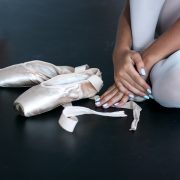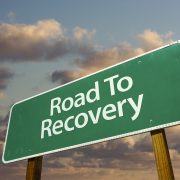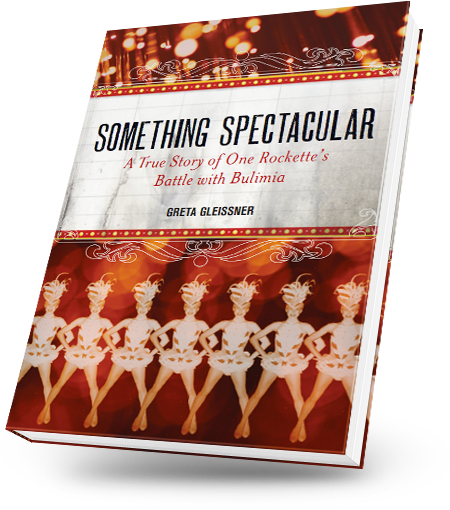I Feel Fat…HOW to Feel Better in Your Body
I cannot tell you how many times throughout my life—especially during the seventeen years I struggled with bulimia—I said the phrase, I feel fat. I could be having a perfectly pleasant day, only to suddenly find myself drowning in negative body image.
Sometimes the trigger was situational, like putting on a pair of jeans that just came out of the dryer, feeling overly full after a meal, or catching a glimpse of myself in a storefront window while shopping. At other times, a more insidious, pervasive type of body dissatisfaction prevailed in that nothing triggered the feeling. It was as if the feeling seeped into my skin and, in an instant, I felt like X body part had tripled in size even though, rationally, I knew that wasn’t possible.
I feel fat, three words that were seemingly benign when standing solo, for years had the potential to ruin my day (and my sanity) when aligned to form a complete sentence. Given Western culture, where success is defined by one’s ability to fit into society’s prescribed and unrealistic ideal of perfection, it isn’t surprising that a large percentage of women have body image issues. The overvaluation of extreme thinness and devaluation of internal beauty penetrates every media outlet.
So, wherever you go, whatever television show you watch, and every billboard or magazine you read, the message is clear. You can never be thin enough. Because of this ideology, you certainly do not have to have an eating disorder to have body image issues. With so much societal pressure, there were many times when I felt hopeless that I would ever feel good in my body. I would be misrepresenting myself if I said that I never experience body image issues.
However, I’m here to tell you that there is hope! Below are some tools that helped me along the way in my body image recovery. Tools that can help you feel better about your body in an instant!
1.) ACKNOWLEDGE and IDENTIFY: When I notice that I feel fat feeling, the first thing I do is recognize that I am having the feeling. The second thing I realize is that fat is NOT a feeling. The phrase is actually a thought. Furthermore, “feeling” fat is often easier than feeling angry, hurt, lonely, etc. That leads me to wonder in what way my emotions may be making me feel emotionally full or fat. I try to first identify what is going on for me emotionally.
2.) CHOOSE: I remind myself that when my negative voice tries to disrupt my happiness with intrusive body image thoughts, I have a choice in how I respond to those thoughts. I can choose to listen to the thoughts and fuel self-hatred, or I can choose to change the thoughts and reinforce self-love.
3.) MAKE A DECISION: After I recognize I have a choice not to feel badly about my body, I decide to do something different. Sometimes a decision is all it takes. No one is forcing you to hate your body, so make the decision not to.
4.) SHIFT THE FOCUS: After I choose NOT to listen to negative body image thoughts and make a decision not to dwell on it, my next move is to shift my focus onto something else. Think about it: the more you focus on something, albeit a feeling, like fear, or a body part, the larger it becomes.
5.) SUPPORT: When body image issues arise, the last thing you probably want to do is be around others. I have found that surrounding myself with positive people in my life actually help because it gets me out of myself. Feeling connected with others can actually help squash some of the perfectionism and criticism tied to body dissatisfaction.
6.) APPRECIATE: Instead of focusing on how your body looks from the outside, think of all of the wonderful attributes and strengths your body has from the inside. Make a gratitude list of all the things you appreciate about your body.
7.) REDEFINE: Create a new definition of beauty. If your body dissatisfaction is driven by the feeling of an inability to measure up to rigid societal standards, then think about how you can offer yourself more flexibility around your personal definition of beauty.
8.) STOP COMPARING: The more we compare, the more we feel despair. When we compare, especially when experiencing body dissatisfaction, we are going to see all the positives in someone else and negatives in ourselves. Comparisons are not usually helpful, even if we are in the best of mental states.
9.) HAVE COMPASSION: In moments when body image issues come up, I am usually feeling critical in some way about myself. If I dig deep, most of the time I realize it is not about my body. My body is just the go-to negative coping mechanism I utilize in the moment. What I need most when I am feeling and focusing negatively about my body or myself is to treat myself with kindness. Beating myself up will not help me, but doing something nice for myself that pertains to self-care will. If you must focus on a body part, do it with compassion and get a manicure and pedicure.
10.) GAIN ACCEPTANCE: Finally, ACCEPT your body in this moment. Imagine how different your life can be in this very moment if you stop trying to berate, change, or control your body and instead allow yourself to accept your body for what it is. When we accept, we let go of the struggle. If you notice, each of the ten tools begins with an action word. Taking action is the “how” of change. We all have the ability, when we are ready, to take action. Don’t put it off any longer. Get into action and you can feel better about your body in an instant!










